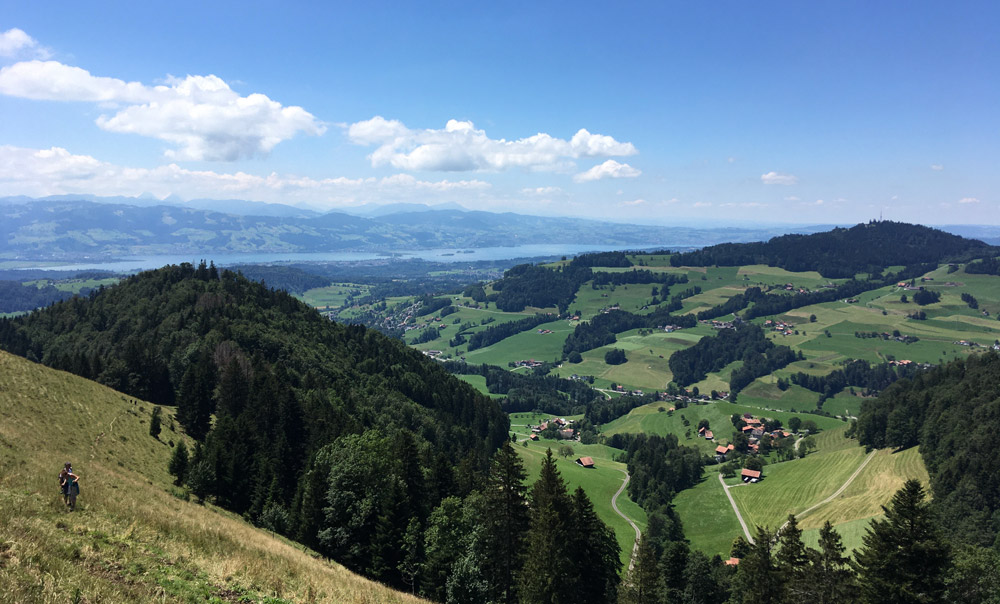#113: Ambitious goals for biodiversity urgently needed!
"Living in harmony with nature" is the 2050 vision of the Convention on Biological Diversity. Twenty biodiversity targets were defined for the past decade. Not a single one of them was achieved in 2020. Now an international consortium of researchers examined drafts for new targets. bioDISCOVERY is part of it.

A decade ago, 20 aims were set to inspire nations to "take effective and urgent action to the loss of biodiversity". These "Aichi Biodiversity Targets" were formulated as part of the Convention on Biological Diversity's Strategic Plan for the period 2011 to 2020. Not a single one of them was achieved.
The international community is now negotiating new targets, a so-called "Global Biodiversity Framework". This new framework puts an emphasis on broad-based actions by governments and societies to achieve the necessary transformation to "put biodiversity on a path to recovery for the benefit of planet and people".
The process of formulating new targets is undertaken by an open-ended working group and includes extensive consultations and opportunities for input from a variety of interested organisations and stakeholders, including science, societal actors and NGOs. Making use of this opportunity, bioDISCOVERY - an international research programme located at the Department of Geography - supported a meeting organized by the Earth Commission in close collaboration with the Convention on Biological Diversity and Future Earth. More than 60 scientists from 26 countries came together to make recommendations based on the latest knowledge in biodiversity and ecosystem science.
Multiple, interlinked and highly ambitious goals are urgently needed
A paper recently published in Science to which I have contributed as co-author lists three points that are critical to consider when setting goals to stabilise or reverse biodiversity loss and the degradation of ecosystems:
1. Address the various facets of biodiversity with multiple goals
Nature is complex and interwoven, and has different facets - genes, species, populations and their evolutionary history, ecosystems and the services they provide. Each of these differ in their geographic distribution, and their response to human induced changes.
2. Define goals holistically
The different facets of biodiversity are closely interwoven and interlinked, synergies and trade-offs need to be considered when designing goals. Actions can contribute to multiple goals at once, but the failure to achieve one goal might undermine others. Goals also need to be set not only for pristine ecosystems, but also for systems that are transformed and managed by humans.
3. Set ambitious goals
Aiming high, as only the highest level of ambition and integrated approaches will give a realistic chance to stop and reverse biodiversity loss. Setting the bar too low will not only be inadequate in stopping the loss of biodiversity, it will also undermine progress towards Sustainable Development Goals and Paris Agreement.
Only greatest efforts can halt the decline of biodiversity
The table illustrates the potential varying levels of ambition have for achievement - or non-achievement - of goals for the different facets of biodiversity. Only the highest ambition is able to stop and reverse biodiversity loss. But even the best goals cannot be achieved without the necessary action to tackle the drivers of change. It is not sufficient to address the direct drivers of biodiversity loss through conservation actions - we also need to address the socio-economic drivers and their underlying value systems to achieve the necessary transformation to achieve the vision of "living in harmony with nature".
Convention on Biological Diversity
Strategic Plan for Biodiversity 2011-2020
Aichi Biodiversity Targets
Díaz, S., Zafra-Calvo, N., Purvis, A., Verburg, P.H., Obura, D., Leadley, P., Chaplin-Kramer, R., De Meester, L., Dulloo, E., Martín-López, B., Shaw, M.R., Visconti, P., Broadgate, W., Bruford, M.W., Burgess, N.D., Cavender-Bares, J., DeClerck, F., Fernández-Palacios, J.M., Garibaldi, L.A., Hill, S.L.L., Isbell, F., Khoury, C.K., Krug, C.B., Liu, J., Maron, M., McGowan, P.J.K., Pereira, H.M., Reyes-García, V., Rocha, J., Rondinini, C., Shannon, L., Shin, Y.-J., Snelgrove, P.V.R., Spehn, E.M., Strassburg, B., Subramanian, S.N., Tewksbury, J.J., Watson, J.E.M., and Zanne. A.E. (2020). Set ambitious goals for biodiversity and sustainability. Science 370:411-413
doi: 10.1126/science.abe1530
Cornelia Krug

